The globalisation of snooker
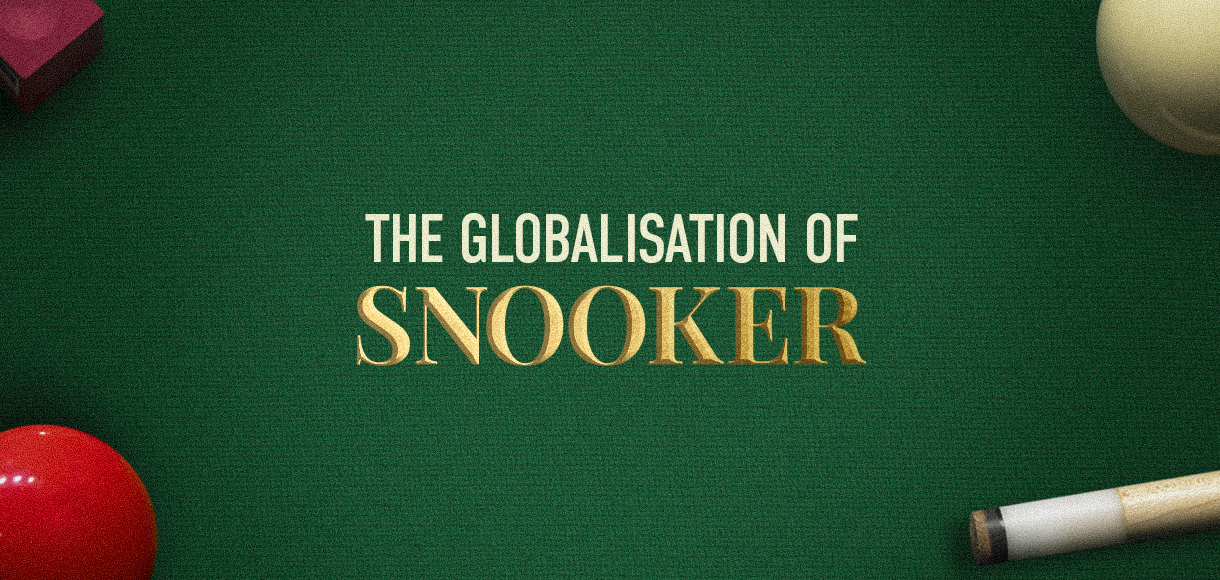
The rise of young Asian players could see the British and Irish dominance of snooker change in the coming years.
There are few sports that Britain dominates more than snooker.
While the game was founded in India, it is the British Army officers situated in Jaipur in the 19th century who are credited with inventing it.
Thanks to stars such as Steve Davis, Alex Higgins and Dennis Taylor, the sport was propelled into the mainstream in the UK & Ireland in the 1970s and 80s, a position it has more or less maintained ever since.
More than half of the ranking tournaments in the 2019/20 World Snooker Tour season were hosted in the UK & Ireland, including the two of game’s ‘triple crown’ events – the UK Championship and the imminent World Championship, which Judd Trump is the favourite to win this year in the latest snooker betting.
The third triple crown event, the Masters, is not a ranking tournament, but also takes place in London.
That is reflected in the British and Irish players’ dominance at the top of the game.
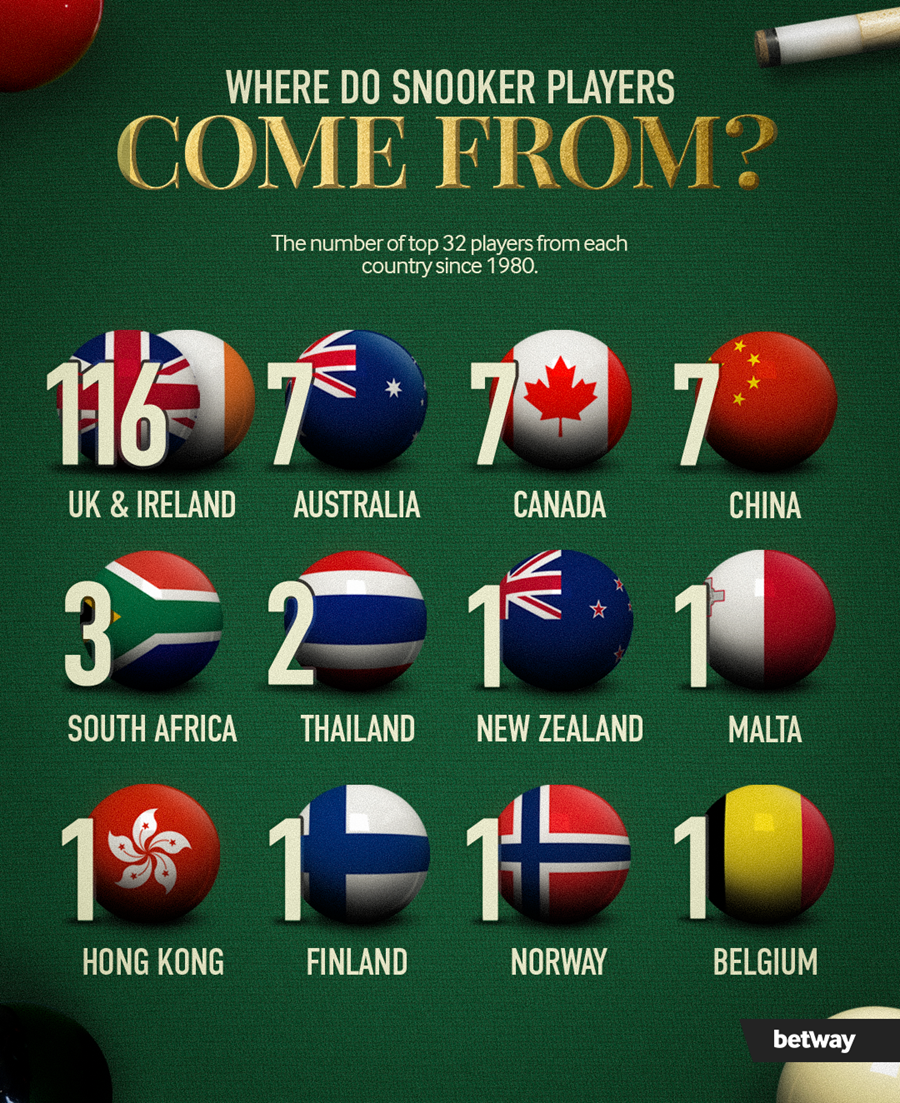
In the last 40 years, 116 of the 148 players to have featured in the top 32 of the rankings have been British or Irish – a total of 78%.
No other nationality has been represented by more than seven players, while Derek O’Kane (New Zealand), Tony Drago (Malta) and Luca Brecel (Belgium) are among six players to be their country’s sole representative.
Where do overseas players come from?
The sharp increase in the number of Asian players on the tour, plus the number of tournaments that are played all over the world, means that snooker is more global than ever.
But it is also worth noting that several of the most popular and memorable moments in the game’s history have featured overseas players, notably when Canada’s Cliff Thorburn became world champion in 1980.
Not for 30 years did another overseas player win at the Crucible, Australia’s Neil Robertson in 2010.
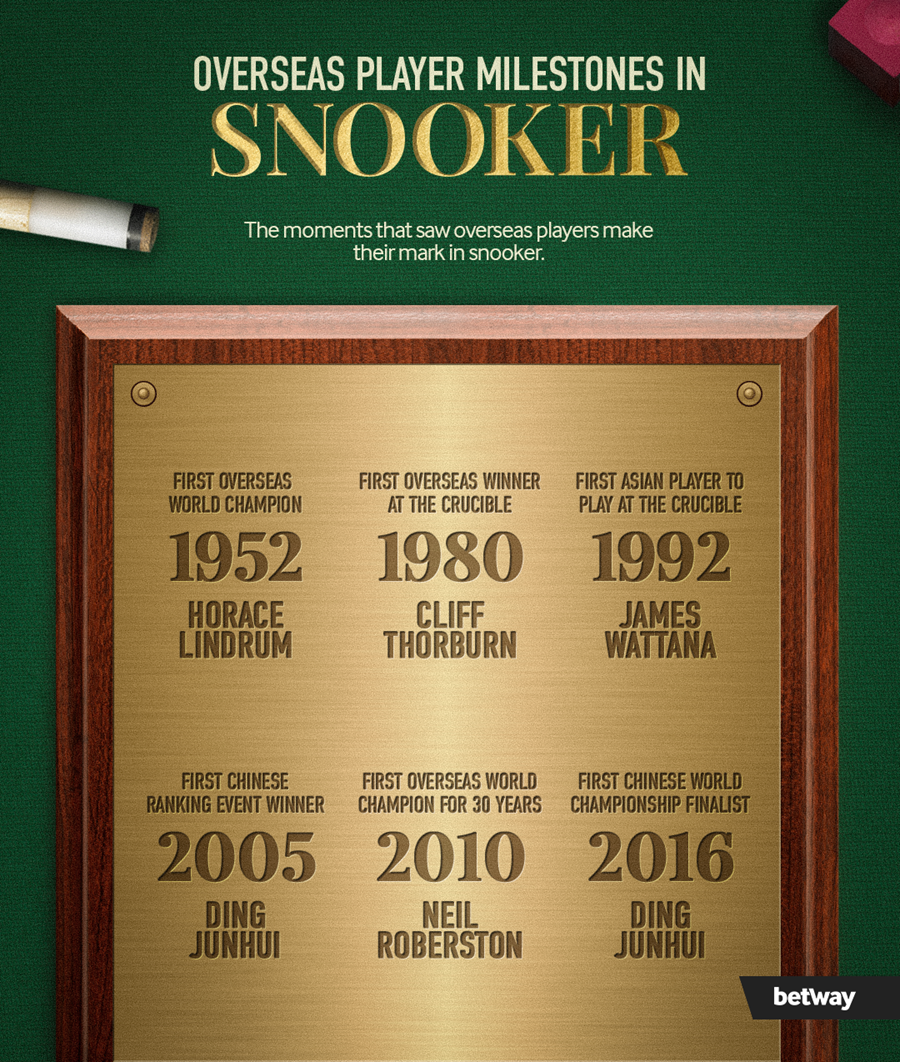
And while the global influence on snooker has undoubtedly increased, it has not yet impacted the top 32 of the rankings in terms of volume.
In 1980, eight of the 28 professional snooker players were from countries other than the Home Nations – one of whom, Thorburn, was world champion.
Currently, the same number of the top 32 are non-British or Irish, and Robertson is the only one of them to have lifted the world title.
The major change in the last 40 years has been the demographic of the foreign players.
In 1980, there were no Asian players on the scene. Four of the eight overseas players were from Australia and New Zealand, with three from Canada and one – Perrie Mans – from South Africa.
As the popularity of the game waned in the 1990s, so did the foreign influence, with just three overseas players in the top 32 by the end of the 1999/2000 season.
The man who can be credited with reviving significant overseas interest in snooker is Ding Junhui.
The then-18-year-old’s stunning victory over Stephen Hendry in the final of the 2005 China Open, his home tournament, was watched by 110 million people on Chinese sports channel CCTV-5 and prompted a craze for the game in that part of the world.
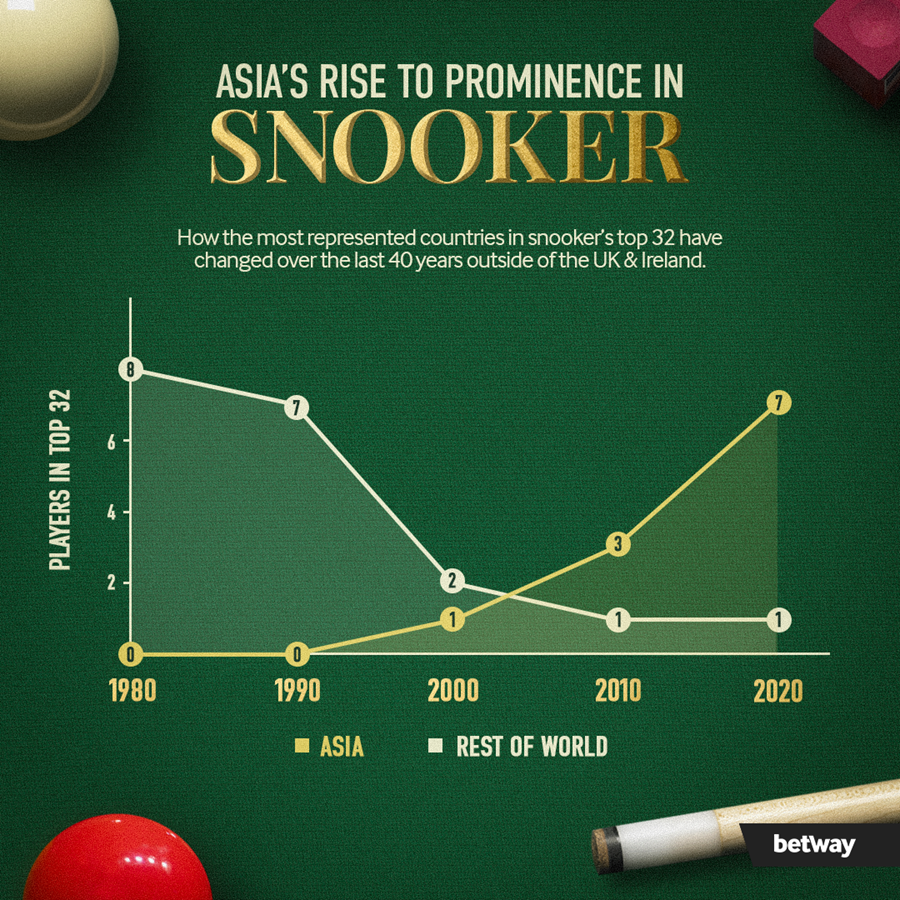
Initially unrivalled as China’s premier player, Ding continued to trailblaze as he took the snooker tour by storm.
He won the UK Championship later in 2005 and has broken several other records since, notably winning five ranking events in the 2013/14 season, a record that has only been beaten by Judd Trump this year.
The significance of his latest triumph, the 2019 UK Championship, was not lost on anybody. His defeated opponents in the quarter-final and semi-final, Liang Wenbo and Yan Bingtao, are both Chinese players who have followed in Ding's footsteps.
His impact can be seen in the rankings, too. Seven of the top 32 are Asian, six of them Chinese, with 23 professionals from China overall.
Are Asian players set to dominate snooker?
Asian players are yet to truly take charge at the top of the game, but the ages of those attempting to get there suggest that it will happen sooner rather than later.
Elite players from across all sports are managing to maintain their standards for longer in the modern age, with Ronnie O’Sullivan (44), John Higgins (45) and Mark Williams (45) – snooker’s class of ’92 – still among the favourites for major honours in their mid-40s.
But it isn’t a good sign that the average age of non-Asian players in the top 32 is nearly 38, with 11 of the 25 representatives over the age of 40.
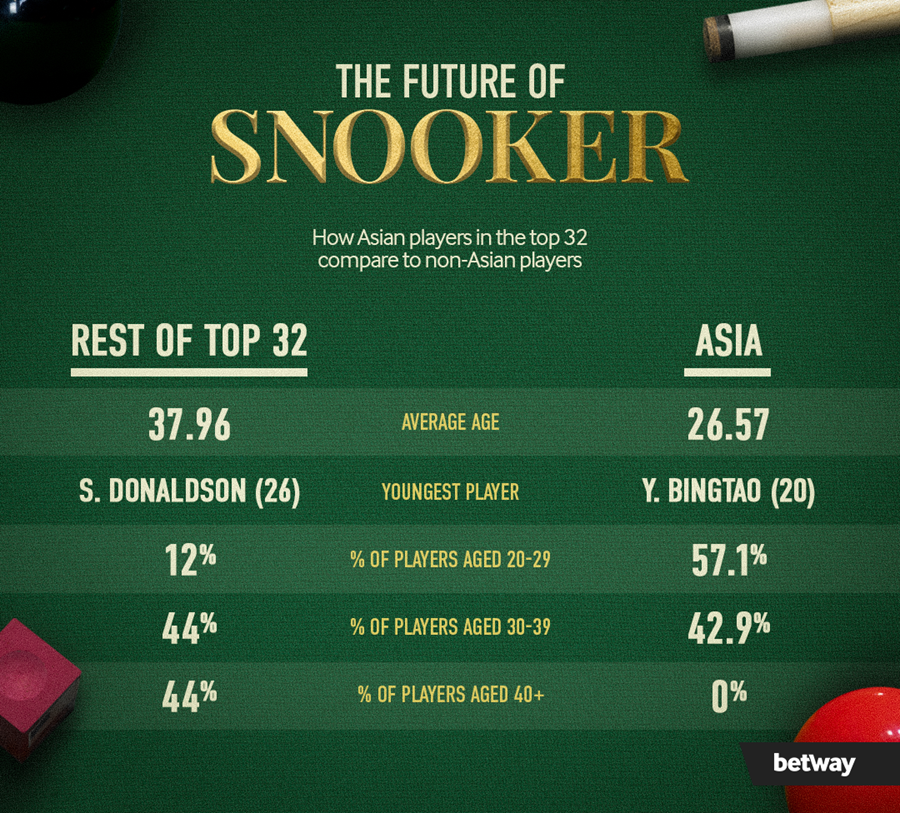
Of the trio under the age of 30, only one, Kyren Wilson, has ever won a ranking event.
Compare and contrast to the seven Asian players in the top 32: only three are over the age of 30 and none are older than 35.
China’s growing influence is perhaps best summed up by the fact that of its seven players to ever feature in the top 32, six of them are in there now. The other, Liang Wenbo, isn’t far behind.
Bingtao, arguably the most-heralded of all of the young Chinese players, became the first teenager for 13 years to win a ranking event last year, and has since powered into the top 16, reaching four other semi-finals this season.
The last teenager to win a ranking event before Bingtao? Ding Junhui.
When you consider, too, that six of the seven teenagers on the overall World Snooker tour are Chinese, it is clear to what extent Ding has changed the future of the game.
With an increasing number of tournaments played in Asia, and an increasing number of Asian players breaking onto the tour, the days of British and Irish dominance of snooker could soon be over.




































